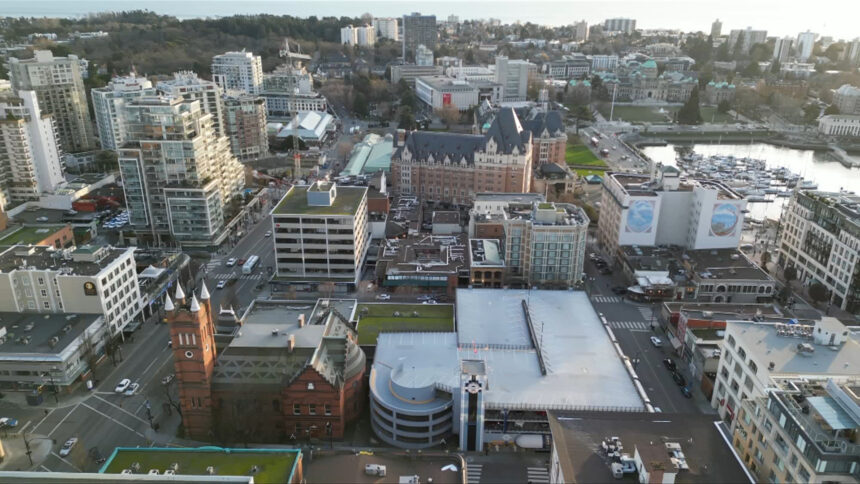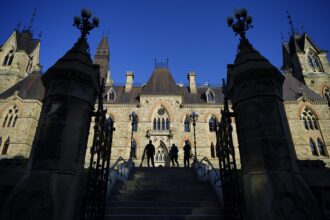The lights dim in another storefront on Government Street. A “For Lease” sign appears in yet another window along Victoria’s once-bustling commercial corridors. For many, these closures spark immediate concern about our downtown’s vitality. But perhaps these empty spaces don’t signal decline—they might actually represent opportunity in disguise.
As Victoria navigates post-pandemic realities, we’re witnessing not the death of downtown but its evolution. The traditional retail model has been under pressure for years, with e-commerce steadily claiming market share long before COVID accelerated the trend. What we’re experiencing isn’t a crisis unique to Victoria but rather a fundamental shift in how urban centers function in the 21st century.
The narrative of downtown decline misses a crucial point: cities have always been dynamic entities that transform in response to economic and social forces. Today’s empty storefronts are tomorrow’s innovative spaces. Throughout history, cultural revitalization has repeatedly breathed new life into urban areas facing transition. Consider New York’s SoHo, once an industrial zone transformed by artists into one of the world’s most vibrant neighborhoods, or Montreal’s Mile End, where creative industries revitalized former manufacturing spaces.
Victoria’s downtown is already showing signs of this cultural metamorphosis. While traditional retail struggles, we’re seeing cultural venues, artisanal food producers, experiential businesses, and creative studios flourish. These enterprises aren’t just commercial entities; they’re community builders that create meaningful connections impossible to replicate online.
The success of events like Car Free YYJ, which transforms downtown streets into vibrant public spaces filled with local vendors, performers, and thousands of engaged citizens, demonstrates the powerful draw of authentic experiences. People crave connection and community—something a cardboard box from Amazon will never provide, no matter how convenient the delivery.
Rather than lamenting change, we should be asking how to cultivate what urbanist Charles Landry calls the “creative city”—a place where cultural production and consumption intertwine to generate both economic value and social cohesion. This means rethinking zoning regulations, exploring mixed-use developments, and creating flexible spaces that can adapt to emerging needs.
The City of Victoria has already begun embracing this cultural economy approach, with initiatives supporting arts organizations, public space activations, and creative industries. But more ambitious action is needed. Cities like Medellín, Colombia, transformed from dangerous to desirable by investing heavily in cultural infrastructure and public spaces that foster community engagement.
Property owners have a critical role to play as well. The traditional model of extracting maximum rent from long-term commercial tenants may no longer be viable. Forward-thinking landlords are exploring more flexible arrangements—pop-up rentals, revenue-sharing models, and incubator spaces that nurture emerging entrepreneurs and artists.
Consumers, too, must recognize their power in shaping downtown’s future. Every purchase is effectively a vote for the kind of community we want. Supporting local businesses and cultural venues isn’t just nostalgic localism—it’s an investment in Victoria’s distinct character and collective well-being.
Critics may argue that emphasizing culture over commerce is economically unsustainable. Yet the evidence suggests otherwise. According to Statistics Canada, the cultural sector generates substantial economic activity, with cultural tourism alone contributing billions to the national economy annually. Moreover, vibrant cultural districts attract residents, businesses, and visitors, creating diverse revenue streams that can actually prove more resilient than traditional retail.
Downtown Victoria won’t return to its pre-internet past—nor should we want it to. Instead of resisting inevitable change, we should be channeling it toward creating a more dynamic, inclusive, and sustainable urban core. The closure of conventional retail outlets doesn’t represent failure but opportunity—a chance to reimagine our shared spaces for a new era.
As I walk past those empty storefronts, I don’t see decline; I see canvases awaiting new visions and voices. Victoria’s downtown isn’t dying—it’s preparing to be reborn. The only question is whether we’ll have the imagination and courage to embrace its transformation.










